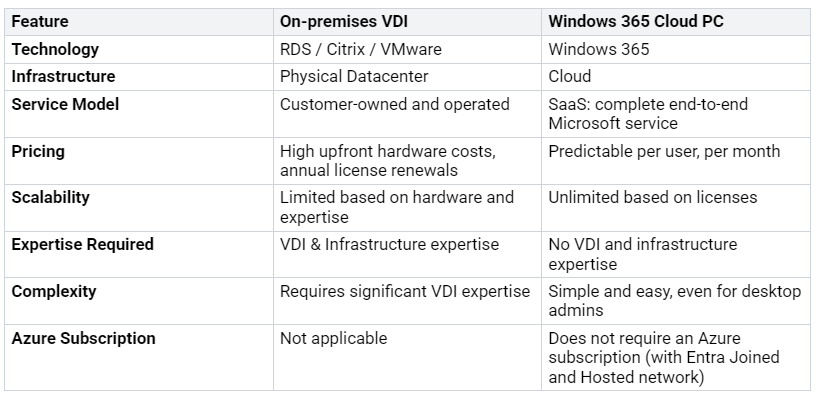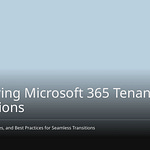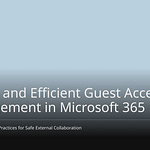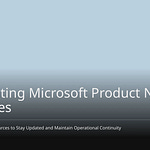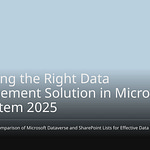Windows 365 is a good idea for mixed work by 2025. It is more than just a fad. Many companies use mixed work styles. This shows it is needed. In 2023, 65% of service companies let people work flexibly. By late 2024, 90% of newer companies did this. This blog looks at how Windows 365 works. It also talks about its limits. IT leaders need to think carefully. They must weigh the good and bad of cloud tools for their staff.
Key Takeaways
Windows 365 lets you work from anywhere. You can use any device.
It makes company computers safer. IT teams can manage them easily.
Windows 365 helps save money. It changes how companies pay for computer hardware.
A good internet connection is key. This helps Windows 365 work well.
Companies should try Windows 365. A few users should test it first.
Understanding Windows 365
What is Cloud PC?
A Cloud PC is a virtual desktop. It lives in the cloud. Users can use a full Windows system. They can do this safely from any device. They can be anywhere. Regular PCs use physical parts. Cloud PCs are different. They use virtualization. This makes computing flexible. This tech makes IT work easier. It helps things grow. It supports mixed and remote work. Cloud PCs use virtualization technology. Users get a full desktop. It is safe in cloud data centers. Key systems power Cloud PCs. These include Windows 365 Cloud PC. Also, Microsoft Azure Virtual Desktop (AVD). And VMware Horizon Cloud. Plus Citrix DaaS.
A Cloud PC has many parts. The user part lets people use Cloud PCs. They use the Microsoft Remote Desktop client. This feels like normal Windows. It has personal settings. The virtualization part has virtual machines. They run Windows OS on Azure. These are separate Cloud PCs for each user. The management part uses Microsoft Endpoint Manager. It sets up and maintains Cloud PCs. The security part uses Azure Active Directory (AAD). This manages who can access it. Microsoft Defender for Endpoint protects against threats. The networking part handles connections. It uses Azure Virtual Network (VNet).
Core Value for Hybrid Work
Windows 365 is very good for mixed work. Users can skip their local computer. They log right into their Cloud PC. This gives instant access. It is a personal and safe Cloud PC. They can use any device. It means less need for specific local hardware. This makes older devices last longer. Windows 365 helps remote and mixed work. It gives a steady desktop experience. Employees get to their work fast. This helps them do more. The system also makes IT work smoother. Teams can set up virtual desktops easily. This saves money. It also makes things better.
Cloud PC vs. Traditional VDI
Windows 365 Cloud PC is very different. It is not like traditional Virtual Desktop Infrastructure (VDI).
Windows 365 is a Software as a Service (SaaS). It makes VDI simpler. It is easy to use. No VDI knowledge is needed. It mixes cloud safety. It feels like a regular PC. Employees can stream a Windows desktop. They can do this from the cloud. They can use any device. Traditional VDI costs a lot at first. It needs VDI and system knowledge. Cloud PC offers easy management. The DaaS provider handles much of the system. They do maintenance and updates. This makes less work for IT teams.
Good Things About Windows 365
Easy to Use Anywhere
Windows 365 gives users much freedom. Workers can use their Cloud PC. They can use any device. This includes their own devices. Remote workers can use their favorite computer. Cloud PCs work well. They are safe. This is true even on personal devices. This makes IT work easier. Employees can still use many devices.
Safe and Follows Rules
Windows 365 makes company computers much safer. It helps keep things safe. This is for people working from far away. Microsoft suggests special access rules. They also suggest extra login steps. It works with Microsoft Defender. This makes protection even stronger. Cloud PCs update by themselves. This helps keep hybrid work safe. Special safety features are included. These stop bad programs. They keep login info safe. All Cloud PC data is also secret.
Windows 365 helps companies follow rules. It meets standards like GDPR and ISO 27001. Tools like Microsoft Purview help manage data. They also help follow rules. It keeps data in Microsoft centers. This meets rules about where data must be.
Easy for IT to Manage
Windows 365 is made to be simple. Company IT teams can manage Cloud PCs. They do not need special experts. This saves money. It is easy to set up. It starts fast. This means less trouble for IT staff. It is simple to set up and manage. There is one main control panel. It works well with what is already there.
Grows and Saves Money
Windows 365 can grow easily. Companies can change computer power. They can make it more or less. This matches what is needed. This helps with busy times. It also helps with project work. It avoids problems when staff numbers change. Companies can expect to get 40% more back. This is on their money spent. It changes from buying hardware. Instead, it is a monthly fee per user. This avoids big upfront costs. It makes old hardware last longer. This saves money overall.
Challenges and Limitations
Performance and User Experience
Cloud PCs offer freedom. But, they can have problems. Users sometimes say they are slow. Disk speed tests also vary. This means data access speed changes. This can slow down work. Especially for big tasks. Good internet is very important. A slow connection causes delays. The Cloud PC feels less quick. Companies must check these issues. They need to pick the right Cloud PC power. This meets user needs.
Connectivity and Offline Access
Good internet is key for Windows 365. Cloud PCs live in the cloud. Users need constant internet. This connects them to their desktop. No internet means no access. This is a big problem. It affects workers with bad internet. It also affects those needing to work offline. Windows 365 has no full offline mode. Users cannot work if internet stops. This can stop work. It lowers output.
Licensing and Cost
Knowing Windows 365 licenses is key. It helps manage total cost. Windows 365 has a set price. It is per user, per month. This cost is easy to guess. The Cloud PC power level sets the cost. This level decides CPU, RAM, and storage. More power means higher fees. Companies must manage these levels. This controls costs. Some things can raise the total cost:
Performance Tier Selection: Picking too high a level costs more.
Licensing Inactive Users: Paying for licenses not used wastes money.
Overprovisioning Licenses: Giving users too much power costs extra.
Failing to Resize Cloud PCs: Not changing Cloud PCs saves money.
Companies should check licenses often. This makes sure they fit user needs.
Integration Challenges
Adding new cloud tools can be hard. Companies may struggle to link Windows 365. This is true with old apps. These apps may not be cloud-ready. They might need special setups. Custom apps need careful checks. This ensures they work on Cloud PCs. Moving data to the cloud is also complex. It needs good plans. Linking with old identity systems is key. Security rules also need care. IT teams need special skills. They also need dedicated help.
Windows 365: Hype or Reality?
Strengths in Hybrid Scenarios
Windows 365 helps with mixed work. It has strong benefits. Workers can use their Windows 11 or 10 desktop. They can use apps and data. Settings are also there. They can use any device. Location does not matter. This keeps business going. It keeps things safe. Workers stay busy. It also saves money. IT work gets easier.
Employees get much freedom. They can use their Cloud PC. Any device works. Laptops, tablets, or phones are fine. They use a browser. Or they use the Remote Desktop app. They can work from anywhere. Performance stays good. If a device breaks, they can log in. They use another device right away. Their work is safe. Data is not lost. It stores in the cloud. This helps IT. Work continues without stopping. Users can start on one device. They can finish on another. A laptop to a tablet works. A home PC also works. This helps mixed teams. Windows 365 works with other tools. These include Microsoft Teams. OneDrive and SharePoint also work. This helps teams work together. It helps share documents. This is for remote and mixed work.
When Alternatives are Better
Windows 365 has many good points. But other choices might be better. This is true in some cases. Other VDI/DaaS options exist. Azure Virtual Desktop (AVD) is one. It often works better than Windows 365. This is when companies want more control. They want more freedom. These choices are better for big companies. They need to manage many desktops. They also suit companies. These companies use old apps. These apps need Windows Server.
Companies need to support many users. They need to do it well. Alternatives are often better. This is also true for seamless links. These links are with old systems. Companies with IT staff can save money. They can make their VDI better. They might like a custom VDI. They might not want a general solution. Other times, alternatives are best. This includes multi-session Windows. Specific data rules also favor them. Where data must be kept matters. Remote app streaming is another reason. Special GPU and HPC work also point to others. Finally, scalable compute and storage exist. These save money. They also help users. These might lead companies to pick other VDI/DaaS.
Cloud PC Maturity
Cloud PC is getting better fast. Microsoft adds new features. It makes old ones better. This helps users. It helps IT manage things. The system is changing. It meets many business needs. It fixes performance issues. It also fixes security. Integration challenges are met. As it gets better, it becomes stronger. It is more reliable. This makes it a good choice for businesses.
Future Outlook
Windows 365 looks good for the future. Microsoft wants to change mixed work. This will happen by 2025. It will use AI for work tasks. It will have closer links. Plans focused on value will help. These changes will make it real. It will not just be hype. AI will likely make things personal. It will do routine tasks automatically. This will make people more productive. Better links with Microsoft 365 will happen. This will make work easier. It will help users and IT. As these improvements come, Windows 365 will be key. It will be a main solution. This is for the changing mixed workplace.
Smart Planning
Getting Ready
Test Runs
Starting with small tests is very important. Companies pick a few users. These users try Windows 365. They give helpful ideas. This finds problems early. It lets them make changes. This is before everyone uses it. Test runs make things go smoothly. They also create fans for the new system.
User Acceptance
Good user acceptance needs clear talks. Companies make a plan to talk. This tells users about Windows 365. It says why it is used. It shows how to connect. Training is also a must. They make guides to connect to Cloud PCs. These guides show how to use them for tasks. They also show how to get help. Getting IT support involved early helps. They teach help desk teams about all Windows 365 situations.
Checking Benefits
Checking how much money is gained is very important. Companies set clear goals. These goals are smart. They track important numbers. This includes better work and saved money. Less money spent on computers helps. Better safety also adds value. Regular checks make sure Windows 365 meets business goals.
Windows 365 is a real answer. It helps with mixed work. It is not just talk. It gives many good things. These include being flexible. It is also safer. IT work gets easier. But, it has problems. These are with speed and internet. Microsoft will keep making Windows 365 better. It will use AI for work. It will connect better with other tools. Companies must look at Windows 365 carefully. They should match it to their needs. They should also match it to their mixed work plans.
💡 Recommendation: Look at what you need. Do this before using Windows 365.
FAQ
What is a Cloud PC?
A Cloud PC is a virtual desktop. It lives in the cloud. Users can use a full Windows system. They can do this safely. They can use any device. This includes their own computers. It is flexible. It works the same every time.
How does Windows 365 differ from traditional VDI?
Windows 365 is a SaaS solution. It makes virtual desktops simple. Traditional VDI needs much equipment. It also needs experts. Windows 365 has a clear price. It is per user. It is also easier to manage.
Can users access Windows 365 offline?
No, users cannot use Windows 365 offline. Cloud PCs need constant internet. This links users to their virtual desktop. No internet means no work. Users cannot work on their Cloud PC.
Is Windows 365 suitable for all businesses?
Windows 365 is good for many mixed work setups. But other choices might be better. Azure Virtual Desktop is one. This is for companies needing more control. It is also for those with old apps. Or many IT helpers.


